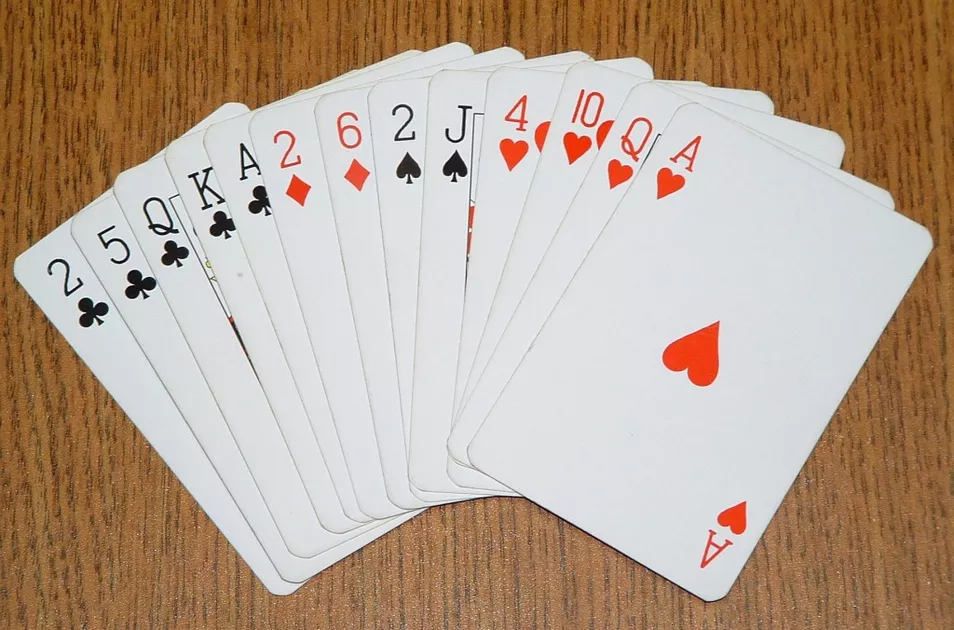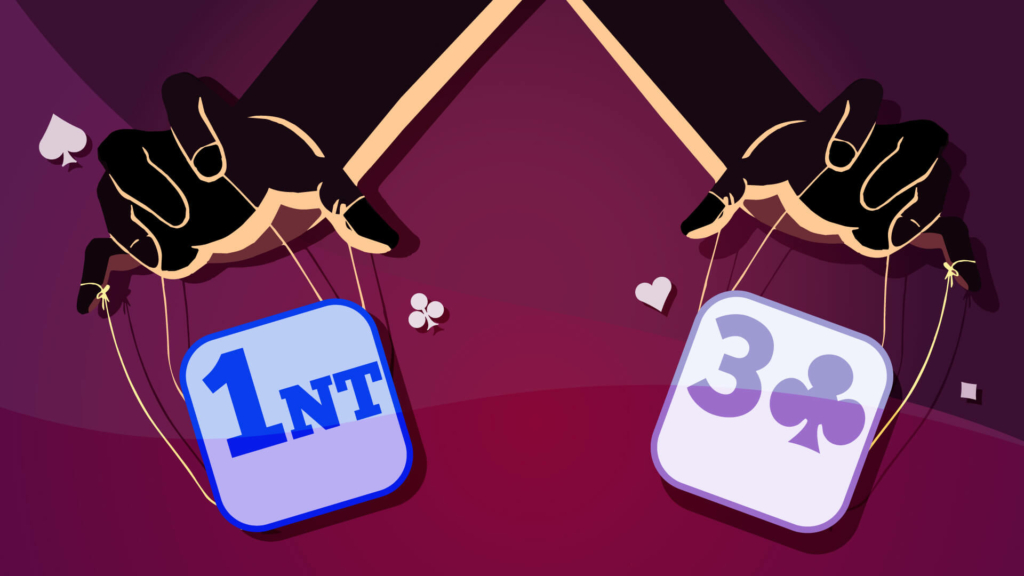Introduction
The game of contract bridge is as much a battle of minds as it is a card game, requiring strategic depth, communication, and coordination between partners. One of the most widely used and fundamental conventions in bridge is the Stayman convention. Named after Sam Stayman, who popularized the technique in the 1940s, this bidding strategy has become a cornerstone in modern bridge gameplay. The Stayman convention allows a responder to explore the possibility of a 4-4 major suit fit after their partner opens the bidding with a 1NT (one no-trump). The technique is simple in concept yet profoundly powerful in execution, offering strategic depth and adaptability. In this blog, we will explore the origins of the Stayman convention, its rules, the logic behind its usage, variations in play, and how players—from beginners to experts—can incorporate this convention to elevate their bridge game to the next level. Please visit this.
Historical Context And Origin Of The Stayman Convention

Although commonly attributed to Sam Stayman, the convention’s initial development is also linked to George Rapée, who proposed the concept to Stayman. In 1945, Stayman formally wrote about the bidding sequence in The Bridge World magazine, leading to its widespread adoption and association with his name. The introduction of the Stayman convention marked a turning point in contract bridge, as players recognized the importance of finding major suit fits rather than settling for no-trump contracts that lacked suit synergy. Since then, it has become an essential part of virtually every bridge player’s toolkit and has undergone multiple refinements and expansions over the decades.
Fundamental Concept Behind The Stayman Convention
The basic principle of the Stayman convention is used after a 1NT opening bid. The responder, holding at least one four-card major suit and typically a game-invitational or better hand, uses a 2♣ bid as an artificial inquiry. This bid asks the opener whether they have a four-card major suit (hearts or spades). The 2♣ response is not natural and does not necessarily indicate club length. The opener is then expected to respond according to a predefined system. A reply of 2♦ denies holding a four-card major, 2♥ shows four hearts, and 2♠ shows four spades. Through this exchange, partners can uncover a hidden major suit fit that would otherwise remain unnoticed in a no-trump-based approach.
Requirements And Hand Evaluation For Using Stayman
Using the Stayman convention effectively requires both strategic thinking and accurate hand evaluation. The responder typically needs to have at least one four-card major and at least eight or more high card points if aiming for a game-level contract. However, depending on partnership agreement, some players use Stayman with weaker hands in hopes of escaping a difficult 1NT contract. The key to successful Stayman usage lies in assessing whether a 4-4 major suit fit is likely to produce a better outcome than a no-trump game. Evaluating hand shape, distribution, and potential ruffing values are all critical when deciding whether to invoke the Stayman convention.
The Opener’s Role In The Stayman Sequence
When a partner initiates the Stayman convention, the opener’s role is to provide accurate and informative responses. If the opener has a four-card major, they should bid that suit at the two-level. If holding both four-card majors, bidding hearts first is standard due to the rank hierarchy. When the opener does not possess any four-card major suits, they respond with 2♦ to deny the inquiry. Opener must also consider the strength and distribution of their hand when choosing subsequent actions, especially if the responder later bids again, which could indicate interest in game or slam.
Continuations After Stayman Responses
The sequence following the Stayman 2♣ bid opens multiple strategic avenues. If the opener bids a major suit and the responder holds a fit and sufficient points, they may raise to game in that suit. Alternatively, the responder might make a jump bid to signal interest in a slam. In some cases, the responder may rebid 2NT or 3NT, indicating preference for a no-trump game if no major fit is found. These continuations depend heavily on partnership agreements and the style of bidding employed—whether natural or based on points, distribution, or a mix of both. Proper planning and clear mutual understanding between partners is critical at this stage.
Stayman In Competitive Auctions

While the Stayman convention shines in uncontested auctions, its utility can become more complex when opponents interfere with overcalls. For example, if an opponent bids over the 1NT opener, traditional Stayman may be disrupted. In such cases, conventional alternatives like “Modified Stayman” or “Lebensohl” are often used to cope with interference. However, advanced partnerships can agree on “non-penalty” doubles or cue-bids to preserve the essence of Stayman even under pressure. These scenarios demand a higher level of experience and partnership synergy, but when executed properly, they offer significant defensive advantages.
Variations Of The Stayman Convention
As with many bridge conventions, Stayman has spawned multiple variations designed to fit different bidding systems and strategies. The most common of these is the “Non-Promissory Stayman,” where the responder does not promise a four-card major but uses the bid to gather more information. Another is “Garbage Stayman,” used with very weak hands to escape from a likely disastrous 1NT contract. There’s also the “Five-Card Stayman,” employed in systems where a 1NT opening might include five-card majors. Each variation tailors the Stayman principle to a different strategic need, reinforcing the convention’s versatility in modern bridge.
Stayman In Different Bridge Systems
The application of Stayman may differ slightly across various bidding systems such as Standard American, Acol, Precision, and Two-Over-One Game Force. In Standard American and Two-Over-One systems, Stayman is almost universally included and used after 1NT openings. In Acol, which often features a weak no-trump, Stayman is adapted for use with lower opening strengths. Meanwhile, in Precision and other strong-club systems, Stayman might be modified or combined with other artificial bids. Understanding these distinctions is essential for players who participate in different systems or play internationally where conventions may vary.
Stayman Vs. Jacoby Transfers: Strategic Comparison
While Stayman seeks to find a 4-4 major fit, Jacoby Transfers are designed to show a five-card major suit and allow the stronger hand to become declarer. Many players use both Stayman and Transfers in tandem to comprehensively explore major suit contracts. When a player has a five-card major, they typically opt for a transfer. When holding two four-card majors or unsure about the opener’s holdings, Stayman is more appropriate. Knowing when to employ Stayman versus a transfer bid is a strategic decision that can dramatically affect the outcome of the hand.
Slam Exploration Using Stayman
Advanced players often use Stayman as the starting point for slam exploration. When a fit is found, and both partners hold sufficient strength, Stayman can evolve into more complex bidding sequences involving cue-bids and control-showing bids. Techniques such as Roman Keycard Blackwood and Gerber may follow a Stayman sequence to confirm specific controls and slam potential. For partnerships that have mastered the fundamentals, Stayman opens the door to high-level bidding accuracy and the ability to find optimal contracts that lesser players might overlook.
Psychological And Partnership Aspects Of Stayman
Because Stayman requires partnership agreement on interpretation, trust and communication are central to its success. Misunderstandings in Stayman sequences can lead to poor contracts or missed opportunities. For example, if one player interprets a 2♣ bid as Stayman and the other believes it is natural, the auction may collapse. Therefore, consistent partnership practice, post-game analysis, and agreement on conventions are vital. Good partnerships review hands regularly and refine their use of Stayman to improve coherence and minimize errors during competitive play.
Teaching And Learning The Stayman Convention
For beginners, learning the Stayman convention can be both exciting and challenging. Bridge teachers often introduce Stayman early because of its simplicity and usefulness. Teaching Stayman involves explaining the logic behind bidding rather than just memorizing responses. Demonstrations, example hands, and bidding practice games are effective tools in learning how and when to apply the convention. Online bridge platforms like BBO (Bridge Base Online) and educational apps have built-in modules for practicing Stayman in various scenarios, helping new players gain confidence and competence.
Famous Matches And The Use Of Stayman
Numerous high-level bridge tournaments have featured Stayman as a key component in successful bidding strategies. In World Championships and national events, top pairs often rely on Stayman to discover game or slam-level contracts that others might miss. These moments are celebrated in bridge literature and commentary, as they showcase the brilliance of logic, anticipation, and teamwork. Examining these expert hands can offer amateur players deeper insight into how Stayman can be used creatively and effectively in pressure situations.
Common Mistakes And Misconceptions In Using Stayman

Despite its popularity, Stayman is sometimes misapplied due to misunderstandings about requirements or follow-up bids. One frequent error is using Stayman with inappropriate hand strength or distribution, which can result in contract misfires. Another mistake is failing to clarify partnership agreements—such as whether Stayman promises a major, or how to respond with both majors. Players must also be wary of using Stayman when a better transfer bid exists. Recognizing these pitfalls and reviewing poor outcomes is crucial for long-term improvement.
Practice And Application: Getting Comfortable With Stayman
Mastering Stayman requires deliberate practice. Players should routinely analyze sample hands, simulate bidding sequences, and quiz each other on different scenarios. Playing regularly with a consistent partner enables both to refine their understanding and execution. Many bridge clubs offer lessons or practice games that focus specifically on popular conventions like Stayman. Keeping a bridge diary or log of common mistakes can also aid retention and growth. With consistent effort, the Stayman convention transforms from a basic tool into a strategic weapon that empowers confident bidding and solid contract placement.
Conclusion
The Stayman convention stands as one of the most enduring and powerful tools in the bridge player’s arsenal. It exemplifies the essence of the game: partnership communication, strategic thinking, and adaptability. From uncovering hidden major suit fits to initiating complex slam investigations, Stayman provides clarity and control in the bidding process. Its simplicity makes it accessible for newcomers, while its depth allows for mastery and nuanced application at advanced levels. Whether you’re playing socially or competitively, learning and perfecting the Stayman convention will significantly elevate your bridge game. As bridge continues to evolve, the Stayman convention remains a timeless technique that reinforces the beautiful complexity and elegance of this beloved card game.

